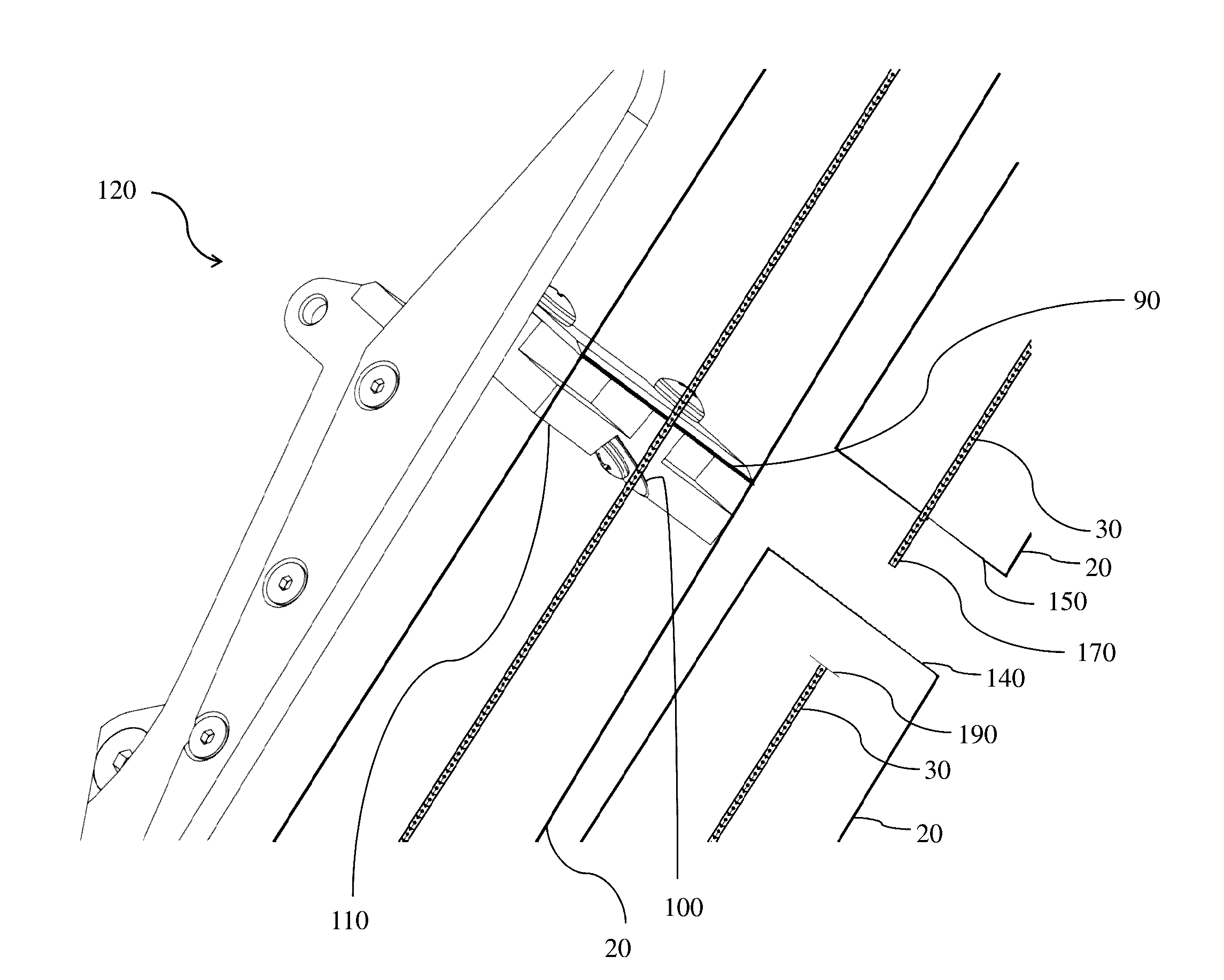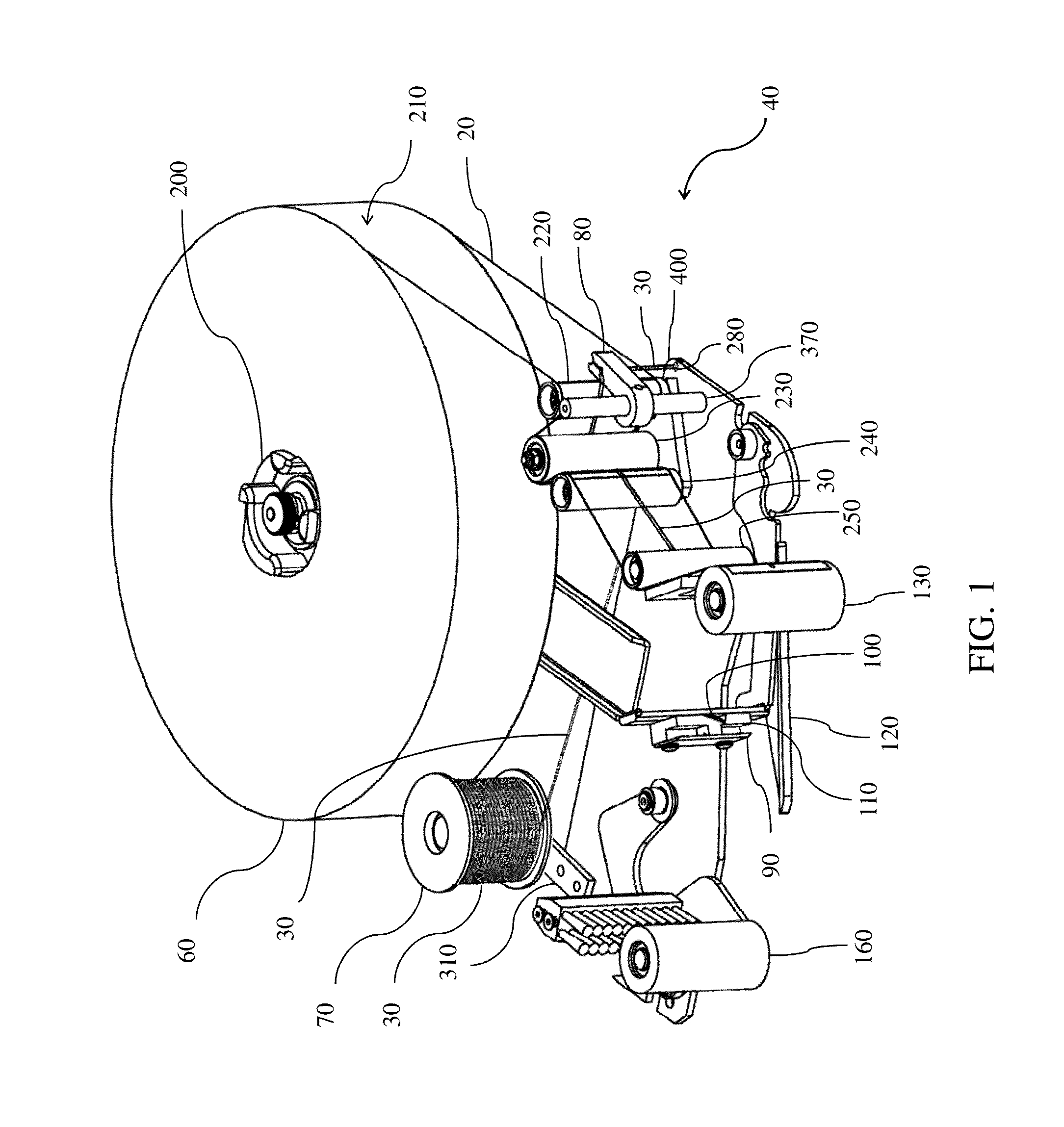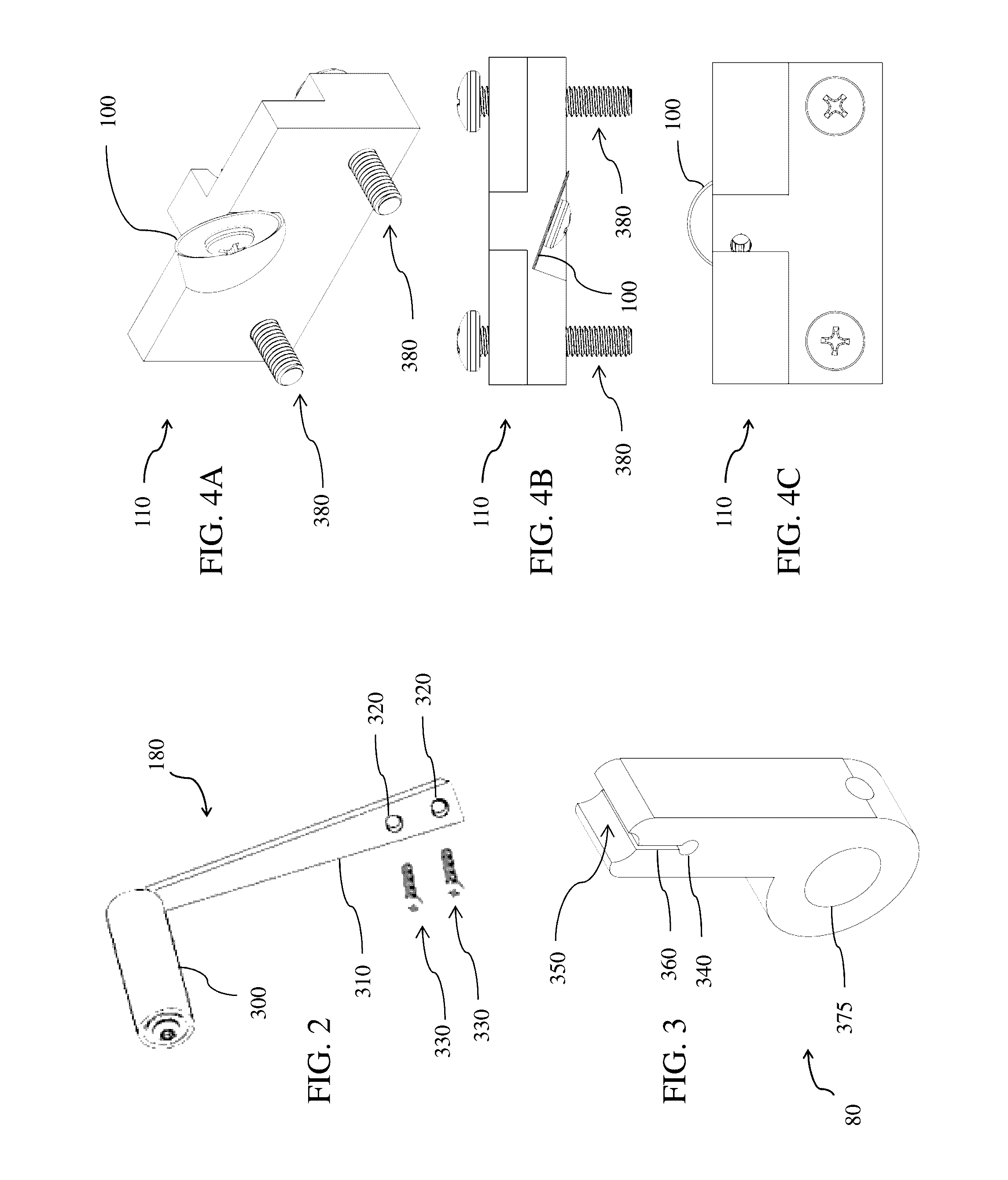Sealing packages using tape and pull cord
a technology of pull cords and sealing packages, which is applied in the field of sealing packages using pull cords, can solve the problems of personal injury, damage to the contents of the package, and difficulty in opening packages sealed with tapes with one's hands
- Summary
- Abstract
- Description
- Claims
- Application Information
AI Technical Summary
Benefits of technology
Problems solved by technology
Method used
Image
Examples
Embodiment Construction
[0017]A user may modify an already-available tape head, such as (for example) Intertape's HSD 2000 series of tape heads (or those of other manufacturers such as 3M or Loveshaw) to obtain the exemplary tape head 40 of FIG. 1. Such tape heads can be used with carton sealers having (for example) Uniform Semi-Automatic, Random Semi-Automatic, Uniform Automatic, or Random Automatic configurations made by such manufacturers as Loveshaw, Intertape, and 3M (see FIGS. 5A-5C). Referring to FIG. 6, the tape 20 from the replaceable roll of tape 60 (received by a tape mandrel or other tape roll holder 200) and the pull cord 30 from the replaceable pull cord spool 70 are initially separate, and the tape 20 and the pull cord 30 are adhered to each other before the tape 20 is applied to packages 10 being sealed. The tape 20, with its adhesive surface 210 facing out, travels past a first guide roller 220, a clutch roller 230, a second guide roller 240, and a third guide roller 250 before encounterin...
PUM
 Login to View More
Login to View More Abstract
Description
Claims
Application Information
 Login to View More
Login to View More - R&D
- Intellectual Property
- Life Sciences
- Materials
- Tech Scout
- Unparalleled Data Quality
- Higher Quality Content
- 60% Fewer Hallucinations
Browse by: Latest US Patents, China's latest patents, Technical Efficacy Thesaurus, Application Domain, Technology Topic, Popular Technical Reports.
© 2025 PatSnap. All rights reserved.Legal|Privacy policy|Modern Slavery Act Transparency Statement|Sitemap|About US| Contact US: help@patsnap.com



